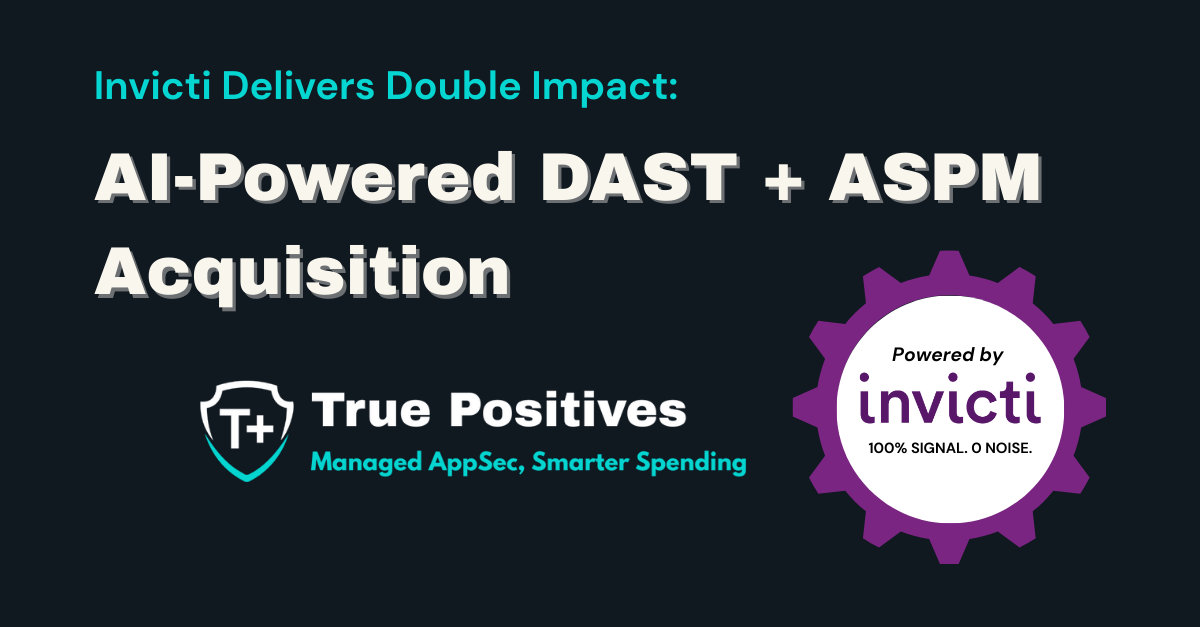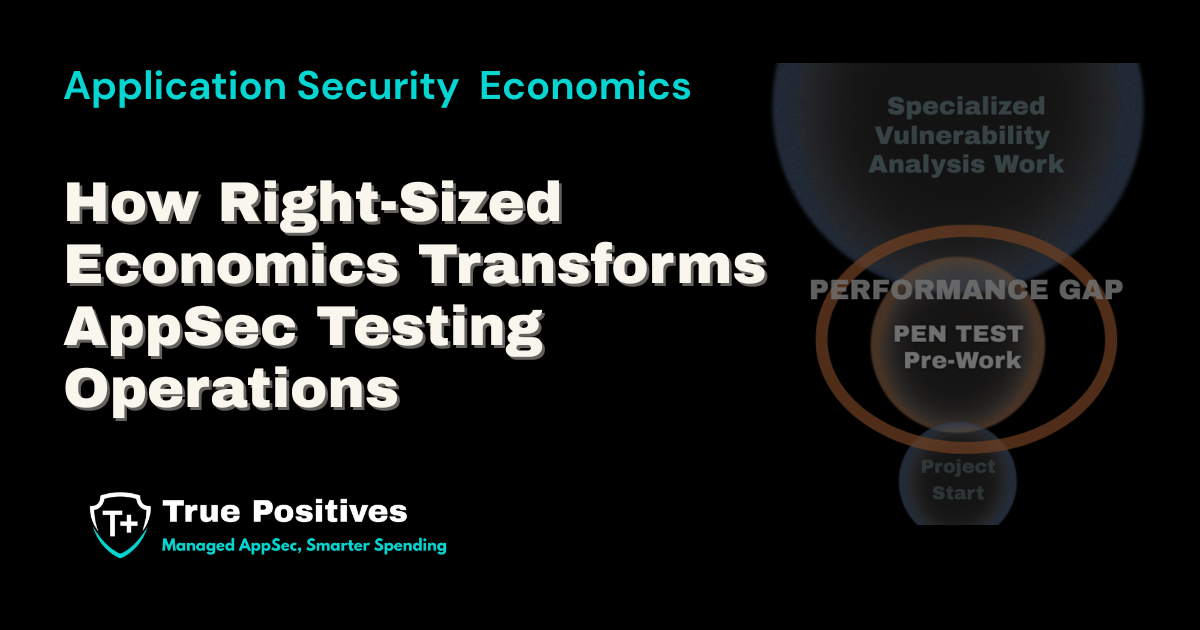Penetration Testing vs. Vulnerability Scanning: A Deep Dive
Over the last few years, with the rise of applications, having a robust AppSec testing program has become more important than ever. Every organization, regardless of size, is now faced with defending a mountain of customer data which makes it necessary to identify and address any vulnerabilities within their systems before a malicious actor can exploit them.
Two of the most common ways to do this are penetration testing and vulnerability scanning. However, although both aim to discover weaknesses, they function differently and each serves a unique purpose.
This article will take a look at some of the differences between penetration testing vs vulnerability scanning so we can understand the strengths and limitations of each, plus when to use them.
What is Vulnerability Scanning?
Simply put, vulnerability scanning is like conducting a health check for your system. It's an automated process that scans your network, systems, and applications to pinpoint any known vulnerabilities or misconfigurations that might make them susceptible to attacks. Sort of like running a diagnostic test on your computer to check for any issues that might be hindering its performance.
In general, these scans have a set of rules which test how the application is configured and handles inputs that tend to lead to vulnerabilities. Once a scan is completed the results are then evaluated for potential risks.
Advantages of Vulnerability Scanning
Vulnerability scanning is a valuable tool for any AppSec professional and offers a number of benefits and advantages including:
- Automated: Vulnerability scans can be automated, saving you time and effort.
- Comprehensive: DAST Tools have a large vulnerability test suite to execute on the application.
- Cost-effective: It's generally less expensive than penetration testing.
- Regular Monitoring: Enables continuous monitoring of your system for new vulnerabilities.
Limitations of Vulnerability Scanning
However, while there are plenty of advantages to vulnerability scanning, it does have some limitations.
These include:
- False Positives: Can sometimes flag non-existent vulnerabilities.
- Limited Scope: Focuses mainly on known vulnerabilities and might miss zero-day attacks or complex vulnerabilities.
- False Negatives: They require training to sometimes get full coverage of the application
What is Penetration Testing?
While a vulnerability scanning is akin to a health check, penetration testing is basically a simulated attack. These tend to be more proactive and in-depth testing where an in house or 3rd party ethical hacker (also known as pen tester) attempts to exploit vulnerabilities in your system simulating the actions of a real attacker. It's the equivalent of you letting someone try to break into your house to test its security.
Generally speaking, the goal is to identify any weaknesses that might have been missed by vulnerability scans and gauge the potential damage that an attack could cause.
Advantages of Penetration Testing
Penetration testing is also an invaluable part of any robust security strategy. It offers some benefits unique from vulnerability scanning such as:
- Real-World Simulation: Provides a realistic assessment of your system's resilience to attacks.
- Identifies Complex Vulnerabilities: Can uncover zero-day vulnerabilities and business logic flaws that automated scans might miss.
- Prioritizes Risks: Helps understand the potential impact of vulnerabilities, enabling you to prioritize your remediation efforts.
- Comprehensive Report: Delivers a detailed report on vulnerabilities, their potential impact, and recommended solutions.
Limitations of Penetration Testing
However, just like vulnerability scanning, penetration testing has its limitations as well. Some of these include:
- Costly: It's generally more expensive than vulnerability scanning.
- Time-Consuming: Can take longer to complete, depending on the scope and complexity of your system.
- Disruptive: Might cause some disruptions to your system during the testing process.
- Time Boxed Human Activity: Typical engages have a time limit and the person doing the testing may or may not execute the same tests in back to back tests.
Penetration Testing vs. Vulnerability Scanning: A Comparative Analysis
To help you understand the key differences between penetration testing and vulnerability scanning, here's a table outlining some of the high level differences between each.
|
Overview |
Penetration Testing |
Vulnerability Scanning |
|
Purpose |
To simulate real-world attacks and assess the potential impact of vulnerabilities |
To identify known vulnerabilities and misconfigurations in your system |
|
Approach |
Proactive and in-depth |
Automated and broad |
|
Methodology |
Manual exploitation of vulnerabilities by ethical hackers |
Automated scanning using a database of known vulnerabilities |
|
Effectiveness |
Highly effective in identifying complex vulnerabilities and their potential impact |
Effective in identifying known vulnerabilities but might miss zero-day attacks |
|
Cost |
Higher |
Lower |
|
Time |
More time-consuming |
Less time-consuming |
|
Frequency |
Less frequent (annually or bi-annually) |
More frequent (monthly or quarterly) |
When to Use Penetration Testing and Vulnerability Scanning
Both penetration testing and vulnerability scanning have their own place in a comprehensive cybersecurity strategy. The decision to use one or the other (or both) depends on your specific needs, risk appetite, as well as budget.
You might consider vulnerability scanning if:
- You are on a tight budget.
- You need regular monitoring of your system for new vulnerabilities.
- You want a quick overview of your system's vulnerabilities.
You might consider penetration testing if:
- You want a realistic assessment of your system's resilience to attacks.
- You are concerned about zero-day attacks or complex vulnerabilities.
- You want to understand the potential impact of vulnerabilities and prioritize your remediation efforts.
Ideally, you should use both penetration testing and vulnerability scanning in conjunction to create a robust cybersecurity posture. While penetration testing can be done more infrequently, you can use vulnerability scanning to provide a continuous monitoring mechanism that can show you where existing vulnerabilities need to be fixed or if new ones arise.
Penetration Testing vs. Vulnerability Scanning: Final Thoughts
When it comes to considering penetration testing vs vulnerability scanning it's not an either or question. Instead, it depends on a number of factors specific to your organization. Use the above as a guide to consider what is right for your organization and and customers.
Remember, the key is to understand your unique needs and choose the right combination of tools and techniques to ensure your system remains secure.
To learn more about what we do here at True Positives and how we can help you build or scale your AppSec program affordably, talk with us today!
.png)
About True Positives
True Positives is a cybersecurity services firm focused on application security. Our team possesses over 100 years of combined enterprise AppSec and DevSecOps expertise. Through our flagship managed services, organizations access enterprise-grade security testing without internal overhead. Our value-added reseller partnerships enable enterprises to construct robust in-house programs with proven tooling and implementation expertise. Serving clients in either capacity, we focus on strengthening security assurance while maintaining development velocity and optimizing program costs. Contact us to discuss your security testing requirements.
%2008%2014%202025%20(4).webp?width=1200&height=400&name=Copy%20of%20%20T%2B%20Logo%20Webpage%20Header%20(500X170)%2008%2014%202025%20(4).webp)


